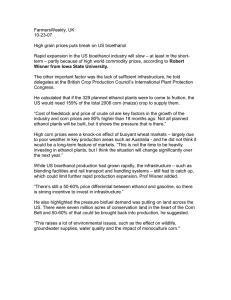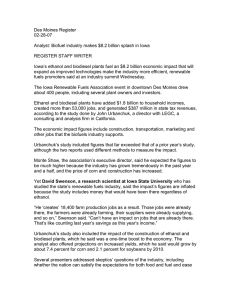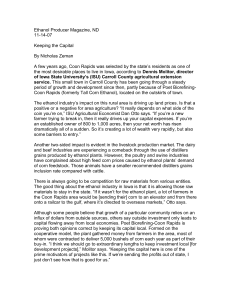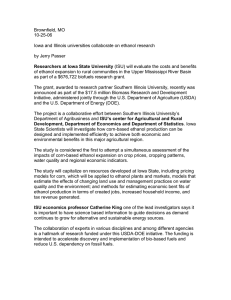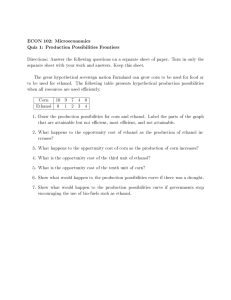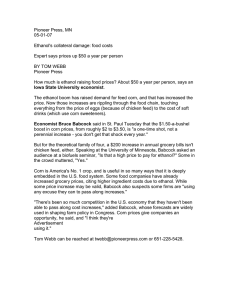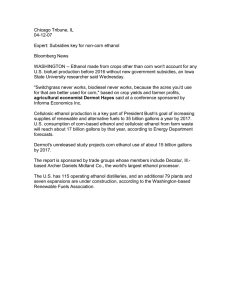Brownfield, MO 10-26-06
advertisement
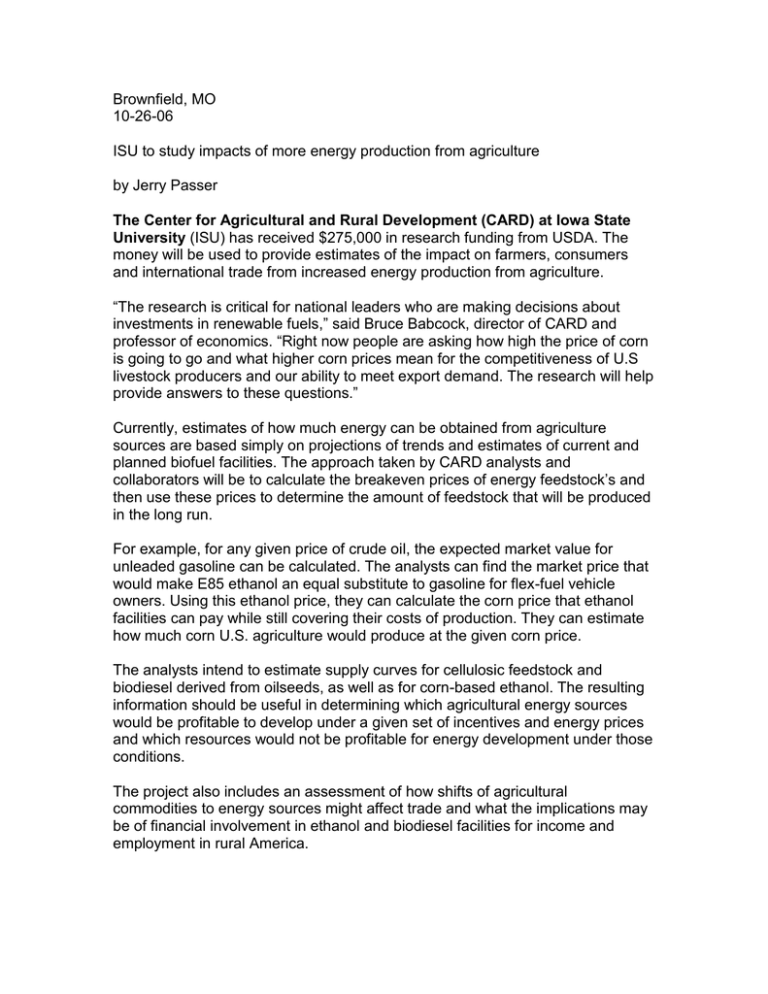
Brownfield, MO 10-26-06 ISU to study impacts of more energy production from agriculture by Jerry Passer The Center for Agricultural and Rural Development (CARD) at Iowa State University (ISU) has received $275,000 in research funding from USDA. The money will be used to provide estimates of the impact on farmers, consumers and international trade from increased energy production from agriculture. “The research is critical for national leaders who are making decisions about investments in renewable fuels,” said Bruce Babcock, director of CARD and professor of economics. “Right now people are asking how high the price of corn is going to go and what higher corn prices mean for the competitiveness of U.S livestock producers and our ability to meet export demand. The research will help provide answers to these questions.” Currently, estimates of how much energy can be obtained from agriculture sources are based simply on projections of trends and estimates of current and planned biofuel facilities. The approach taken by CARD analysts and collaborators will be to calculate the breakeven prices of energy feedstock’s and then use these prices to determine the amount of feedstock that will be produced in the long run. For example, for any given price of crude oil, the expected market value for unleaded gasoline can be calculated. The analysts can find the market price that would make E85 ethanol an equal substitute to gasoline for flex-fuel vehicle owners. Using this ethanol price, they can calculate the corn price that ethanol facilities can pay while still covering their costs of production. They can estimate how much corn U.S. agriculture would produce at the given corn price. The analysts intend to estimate supply curves for cellulosic feedstock and biodiesel derived from oilseeds, as well as for corn-based ethanol. The resulting information should be useful in determining which agricultural energy sources would be profitable to develop under a given set of incentives and energy prices and which resources would not be profitable for energy development under those conditions. The project also includes an assessment of how shifts of agricultural commodities to energy sources might affect trade and what the implications may be of financial involvement in ethanol and biodiesel facilities for income and employment in rural America.


